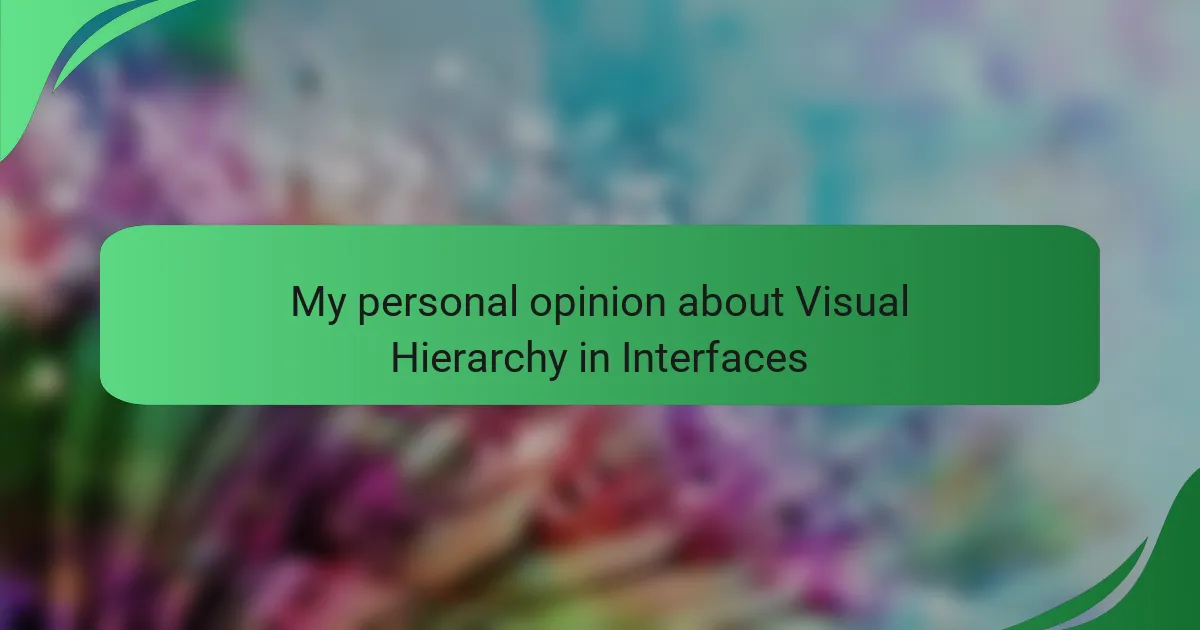Key takeaways
- A consistent color palette enhances brand identity and user recognition.
- Color choices significantly affect user emotions and experience, influencing interaction.
- Implementing color harmony can simplify the design process and improve usability.
- Using structured color styles boosts design confidence and fosters creativity.

Introduction to Color Palettes in Design
When I first started experimenting with color palettes in my design projects, I quickly realized how crucial they are to creating a cohesive visual experience. A well-chosen color palette can evoke emotions and enhance the usability of a website, making it memorable for users. In my practice, using consistent colors in tools like Zeplin has transformed my approach to interface design, allowing for more polished and effective outcomes.
Colors don’t just fill space; they tell a story. For example, I remember feeling quite overwhelmed by the sheer number of color options available when I began designing. However, narrowing it down to a specific palette not only simplified my process but also brought a sense of harmony to my work.
| Aspect | Impact |
|---|---|
| Consistency | Ensures a unified look that reinforces brand identity. |
| Emotional Response | Colors can evoke specific feelings, influencing user behavior. |
| Usability | Appropriate color contrast enhances readability and accessibility. |

Importance of Consistent Color Use
Using a consistent color palette is vital, as it helps reinforce brand identity across different interfaces. I recall a project where the client was struggling to communicate their vision. By applying a unified palette, the brand suddenly had a strong, cohesive look that resonated with users, making them feel more connected to the brand’s values. Have you ever noticed how the right colors can create an emotional bond? It’s as if a specific shade can evoke nostalgia or excitement.
Moreover, color consistency directly impacts usability. If you think about it, appropriate color contrast can make all the difference in readability. I remember testing a design where the text blended too closely with the background. Once I adjusted the colors for better contrast, users found the content not only easier to read but also more engaging. That simple tweak elevated the user experience significantly.
Additionally, consistency in color use can profoundly influence user behavior. Colors evoke emotions and guide actions, subtly leading users toward desired outcomes. In my experience, applying the same color for call-to-action buttons created an intuitive flow. Users instinctively knew where to click, feeling confident in their choices. Isn’t it fascinating how a well-thought-out color choice can lead to more effective interactions?

Principles of Color Theory
When delving into the principles of color theory, it’s crucial to consider how different colors can evoke various emotions. For instance, I’ve always found that warm colors like reds and oranges tend to energize and create a sense of urgency, while cooler shades like blue often promote calmness and trust. Understanding these effects has helped me make more informed design choices, ensuring that my color palette not only aligns with the brand but also resonates positively with users.
Another essential aspect is color harmony. Working with a consistent palette means mixing colors strategically, which can create visual comfort. I remember a project where I struggled with color clashes, making the interface feel chaotic. Embracing color harmony not only resolved those issues but also made the design feel more cohesive and inviting.
Here’s a comparison table that outlines the primary colors, their emotional associations, and examples of use in interface design:
| Color | Emotion |
|---|---|
| Red | Excitement, urgency |
| Blue | Trust, calmness |
| Green | Growth, stability |
| Yellow | Happiness, optimism |
| Purple | Creativity, luxury |

Setting Up Color Styles in Zeplin
When I first started using Zeplin, setting up my color styles felt a bit overwhelming. However, I quickly realized that defining a consistent color palette was essential for maintaining a cohesive look across all my projects. I remember the satisfaction I felt when I created my first color style set; it was like giving my designs a solid foundation.
To set up color styles in Zeplin, follow these steps:
- Open your project and select the “Color” section in the left panel.
- Click on “Add New Color” to start defining your primary, secondary, and accent colors.
- Use HEX values to ensure precision in color selection, which helps maintain brand consistency.
- Name each color meaningfully to make it easier for collaborators to understand their purpose.
- Group similar colors or assign tags to keep everything organized.
Seeing those colors come together not only brought clarity to my design process, but it also boosted my confidence as a designer.

Implementing a Color Palette Across Projects
Implementing a color palette across projects requires attention to detail and a clear understanding of how colors influence user interaction. In my work with Zeplin, I’ve learned that maintaining a consistent color scheme helps in creating a cohesive brand experience. I remember the first time I applied a specific palette; it not only unified the design but also evoked positive emotions from users who appreciated the aesthetic harmony.
I often experiment with different combinations to find what resonates best, and having a defined palette makes it easier to iterate quickly without losing sight of the overall vision. The way colors interact can set the tone for the user experience, and I’ve seen firsthand how this impacts user engagement. Below is a simple comparison table showcasing common color applications in design:
| Color Usage | Impact |
|---|---|
| Primary Color | Brand Recognition |
| Accent Colors | Visual Interest |
| Background Colors | User Comfort |

Personal Experience with Color Consistency
Color consistency has been pivotal in my design projects. I remember the first time I used a consistent color palette in Zeplin; it felt like giving my designs a voice. By sticking to a set color scheme, I was able to enhance user experience and create a cohesive brand identity that resonated with users.
In my experience, working with a well-defined color palette not only streamlines the design process but also fosters creativity. I often found myself drawn to colors that spoke to my audience, helping me mold the emotional tone of the interface. When colors are consistent, users navigate with confidence, and that’s a satisfying feeling for any designer.
Key Takeaways:
– A consistent color palette strengthens brand identity and user recognition.
– It simplifies the design process, allowing for efficient workflow.
– Using a defined scheme can evoke specific emotions and improve user experience.
– Colors that align with audience preferences enhance engagement.




